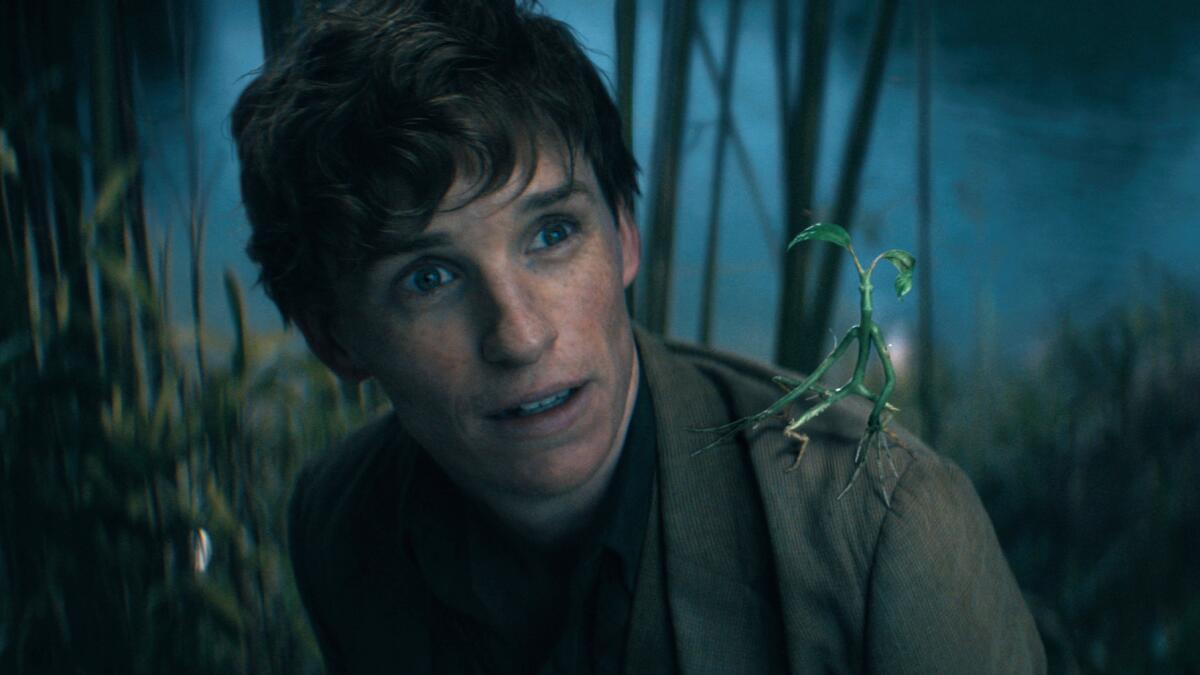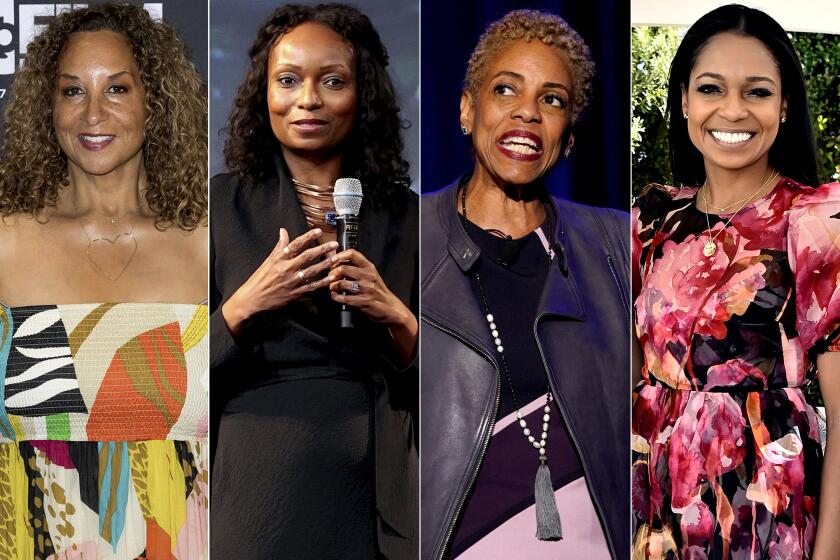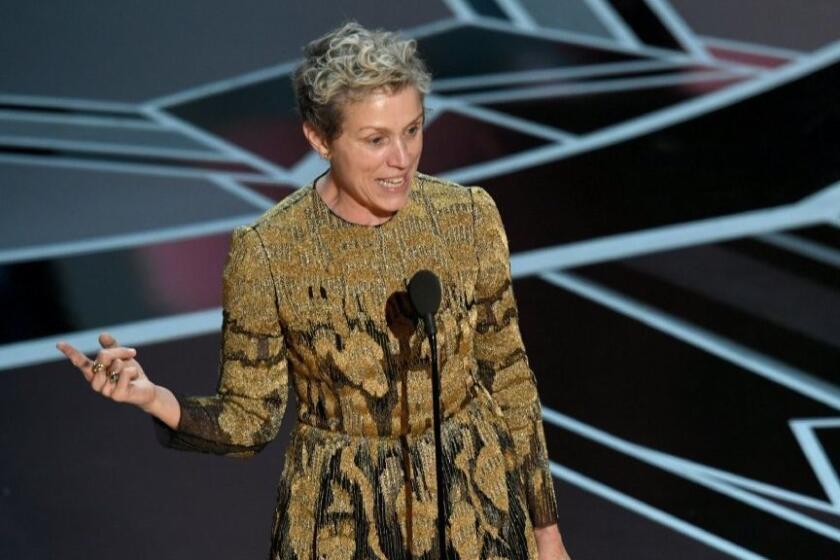In searing âindictmentâ of Hollywood diversity, USC film study shows 16 years of stasis

Todayâs popular films are more inclusive in their casting than they were 16 years ago, according to a USC Annenberg study released Thursday. But whoâs in leading roles in front of and behind the camera has hardly changed.
Since 2007, the Annenberg Inclusion Initiative (AII), led by USC Communication Professor Stacy L. Smith, has tracked the gender and race/ethnicity of characters in each yearâs top 100 domestic films. In 2014, the study added LGBTQ+ status to its data, and in 2015, disability status.
AIIâs latest report reveals that years of advocacy and activism have failed to substantially increase the inclusion of underrepresented groups in popular films.
âSuch a lack of progress prompts the question of whether Hollywood wants to change,â Smith wrote in a statement accompanying the report, âor whether it would rather rely on platitudes and promises instead of making progress.â
If the industry were interested in change, Smith told The Times, the easiest way to start would be by addressing disparities in casting for underrepresented girls and women.
While the percentage of films with girls and women in leading and co-leading roles reached a 16-year high in 2022 of 44%, fewer than half of those leads were women of color, and only five were 45 years of age or older.
In addition, there has been no significant change in the percentage of speaking characters identified as female since 2007, with near-complete erasure of women from Native Hawaiian/Pacific Islander, American Indian/Alaska Native and Middle Eastern/North African backgrounds.
Only one 2022 character was coded as nonbinary.
Alongside conservative attacks on âwokeâ entertainment, equity advocates call the departure of four key Hollywood diversity executives âfrightening.â
The team at AII, which has written versions of the same report for years, isnât shocked by these numbers, Smith said.
âItâs so predictable, itâs almost tragic,â Smith said. But change is possible, and itâs not complicated, she added.
âLet me tell you how simple it would be,â she added. âYou would add five female speaking characters to each of the top 100 grossing films, set a new norm, repeat the process based on the new norm for four years â and youâd be at equality for the first time ever in the history of cinematic content.â
Smith calls this concept âJust Add Fiveâ and has recommended in previous reports that companies implement it.
Another proven way to diversify casts is hiring more directors who are women and people of color.
Fewer than one in 10 directors in 2022 were women â an increase since 2007 but no substantial change from 2008. Of all racial minority groups, only Asian directors made up more than 10% of total directors (10.6%). Scarcely any directors at all represented multiple marginalized groups.
Yet when movies had female, Black or Asian directors attached to them, the report shows, characters of those identities were far more often cast in leading or co-leading roles.
There has been notable progress for only one community onscreen since 2007: The percentage of Asian characters increased from 3.4% in 2007 to 15.9% in 2022. Although the percentage of white characters decreased over the same 16-year time frame, there were no other differences observed for characters from underrepresented racial/ethnic groups.
Liberated from the pressure to say something profound, Prime Videoâs new film succeeds where others have failed, smuggling queer ideas into a straight genre.
Hollywoodâs problems are even more pronounced for the LGBTQ+ and disability communities, the report shows.
Of the top 100 films in 2022, 72 did not feature even one LGBTQ+ speaking or named character, and 84 were missing LGBTQ+ girls and women entirely.
In addition, of the minuscule 2.1% of speaking or named characters who were LGBTQ+, more than 40% were inconsequential to the story.
These are characters who typically say five lines or less, Smith said. If you were to remove them completely, it would have no impact on the story. These roles often enable early-career actors to break into the business.
âBut when you see identity correlate with inconsequential acting opportunities, thatâs a red flag,â Smith said.
Even when they are in speaking roles, LGBTQ+ characters typically fall into one archetype.
âThe image of the LGBTQ community in popular film is one that â when not defaulting to invisibility â continues to advance a portrait of White, male, adult characters,â the report reads.
While the highest number of transgender characters was observed in 2022, this was a total of five characters â and four of them appeared in one movie, âBros.â
A Times analysis has found that Latino representation in film and TV has stagnated for a decade-plus, even as Latinosâ share of the population has grown.
A similar trend is visible in disability representation.
Of the already low percentage of speaking characters shown with any disability in 2022, 1.9%, three-quarters have physical disabilities. Those with communicative disabilities (i.e., difficulty with speech, hearing and vision) make up another third, and those with cognitive disabilities (i.e., depression, dementia and PTSD) make up less than one fifth. Because characters could be shown with more than one disability, these figures do not total to 100%, the study notes.
As with LGBTQ+ characters, most characters with disabilities were white and male. Only one character with a disability in 2022 was LGBTQ+.
Not only do films struggle with representation; they come nowhere near a nuanced and intersectional understanding of minority identities, the report says.
To do so, Smith said, the industry must implement radical changes at every level of production.
In addition to following the âJust Add Fiveâ rule and hiring more women and nonwhite directors, Smith recommends the industry use clear criteria in hiring and casting processes â as opposed to falling back on implicit biases or nepotism.
To incentivize companies to make such changes, AII recommends leveraging shareholders and popularizing inclusion riders â contractual stipulations that actors can have inserted into their contracts, which would require a certain level of diversity among a filmâs cast and crew.
Frances McDormand famously endorsed inclusion riders in her 2018 Academy Awards acceptance speech. Backstage, she explained sheâd only learned about them a week prior, after 35 years in the business.
âI have two words to leave you with tonight, ladies and gentlemen,â said Frances McDormand in her Oscars acceptance speech last year.
Ultimately, the film industry will only progress âif everyone commits across the industry to pull a lever in the same direction for inclusion,â Smith said.
Right now, she sees no such progress.
âThese data are really an indictment,â Smith said. Despite pledging its commitment to progress, âThe entertainment industry is not capable of self-regulation and changing the way in which they do business to ensure inclusion from consideration to hiring to on-set experiences.â
As she has since 2007, Smith continues to wait for Hollywood to keep its promises.
More to Read
Only good movies
Get the Indie Focus newsletter, Mark Olsen's weekly guide to the world of cinema.
You may occasionally receive promotional content from the Los Angeles Times.














